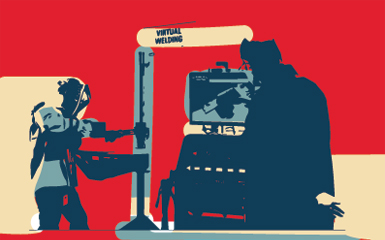Regional Report: Tax and Other Incentives Help Job-Creation Numbers in the Pacific States
In response to their specific needs, the Pacific States have instituted varied business-support tools that enhance their competitiveness.
Directory 2016

California took a cue from the business community itself, sending more than two dozen state officials off to Lean 6 Sigma training, with the goal of making government and the permitting process more efficient. The state followed up with the launch of an online business portal sporting a set of tools to ease the process of doing business.
Among Oregon’s latest ideas for helping businesses grow is its Small Business Expansion Program, a finance program targeting companies falling between an angel investment situation and more traditional financing. Recipients pay the funding back through a formula that takes sales into account. “By connecting small companies with the resources they need to thrive, Oregon is seeding job growth while supporting businesses that might otherwise not have access to these kinds of tools,” Gov. Kate Brown said in announcing the program in October.
Oregon and Washington, meanwhile, are working to modernize manufacturing, and together have received a federal designation under the Investing in Manufacturing Communities Partnership initiative. The two states created the Pacific Northwest Manufacturing Partnership to focus on, among other things, wood products.
Business-Support Tools
Business support tools vary significantly from one state to the next, and typically reflect state-specific needs and situations. Hawaii, for example, wanted to boost its film industry and launched a public-private partnership to create new, more sophisticated broadband connectivity. The move helps the state’s on-location production crews deliver their work to mainland studios more efficiently. And though the project initially targets film businesses, the state intends to make the technology available to others in the future.
The state of Washington responded to the call for business-friendliness by reorganizing its economic development efforts over the past couple of years into the Office of Economic Development and Competitiveness — different approach, but similar aim: make the state more prosperous and competitive, particularly in such targeted sectors as aerospace, clean technologies, life sciences, maritime and military/defense.
Among other initiatives, Alaska has joined other states in the pursuit of the unmanned aircraft systems business. The state’s strategy plays up Alaska’s wide-open spaces that are ideal for testing drones — it has multiple test ranges designated and has been exploring what kinds of incentives would be most effective in helping grow the industry.
Such programs are, of course, just the tip of the iceberg among economic development efforts. As the economy continues to recover, all of the Pacific States are finding reasons to be optimistic that their business-friendly efforts are paying off.
Success Stories
California has a massive economy, so state officials tend to report their successes in the aggregate. Its most recent headline touted the 7,164 jobs created through $43.7 million in California Competes tax credits split among 89 growing companies. The California Competes Tax Credit was created by Gov. Brown and is focused on helping businesses grow and stay in California. In keeping with the state’s high-tech reputation, the list is peppered with technology companies, from such up-and-comers as NerdWallet and Credit Karma to established technology firms such as IBM and Cerner.
The recipient list also has its share of manufacturers and biotech firms. The total investment sparked by California’s most recent awards is in excess of $600 million, according to the Governor’s Office of Business and Economic Development. Since 2014, $223 million has been awarded to 330 companies projected to create more than 42,000 jobs and $9.6 billion in investments.
Washington continues to enjoy success as a major exporter, thanks in large part to its massive aerospace industry. The state recorded $48.8 billion in aviation exports last year, more than half of Washington’s overall exports. Some 95 percent of all commercial aircraft made in North America last year came from Washington. A major supplier to Boeing, Toray Composites America (TCA), recently completed its fifth production line at its plant in Frederickson, near Tacoma, Washington, representing a $100 million investment. Producing the carbon-fiber tape from which Boeing fabricates its composite structures on the 777 and 787, this additional line makes Frederickson’s TCA facility the largest of its kind in the world.
Hawaii’s economic recovery is picking up the pace, according to the Department of Business, Economic Development & Tourism. Growth is still far from the 5 to 6 percent rate that was typical during the last economic expansion, but state officials expect to come close to 2 percent for 2015 and higher in 2016.
Jobless rates across the Pacific States are on the whole just a little higher than the national rate. The most recent numbers are from September 2015, when the rates were 6.4 percent in Alaska, 5.9 percent in California, 6.2 percent in Oregon, and 5.2 percent in Washington. The exception is Hawaii, which has been falling well below the national average unemployment, with a rate of 3.4 percent.
Project Announcements
Eurofins Lancaster Laboratories Expands Lancaster County, Pennsylvania, Research Operations
01/03/2026
Creative 3D Technologies Expands Cedar Park, Texas, Headquarters-Manufacturing Operations
01/03/2026
Valerie Health Plans Chattanooga, Tennessee, Operations
01/02/2026
Samsung Biologics Plans Rockville, Maryland, Manufacturing Operations
12/31/2025
Kraken Technologies Limited Plans New York City Headquarters Operations
12/29/2025
Lupin Expands Coral Springs, Florida, Operations
12/29/2025
Most Read
-
The Workforce Bottleneck in America’s Manufacturing Revival
Q4 2025
-
Rethinking Local Governments Through Consolidation and Choice
Q3 2025
-
Data Centers in 2025: When Power Became the Gatekeeper
Q4 2025
-
Tariff Shockwaves Hit the Industrial Sector
Q4 2025
-
Investors Seek Shelter in Food-Focused Real Estate
Q3 2025
-
The Permit Puzzle and the Path to Groundbreaking
Q3 2025
-
Supply Chain Whiplash Reshapes CRE
Q3 2025



